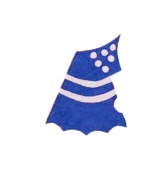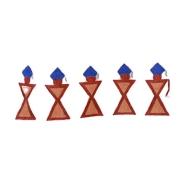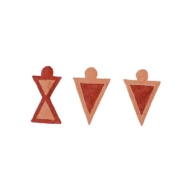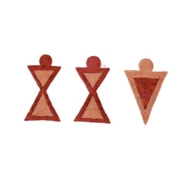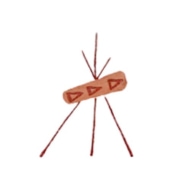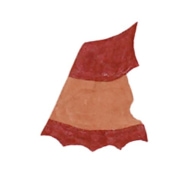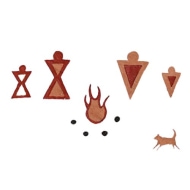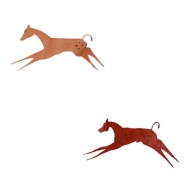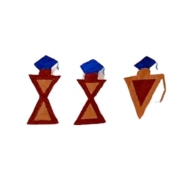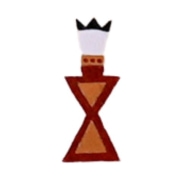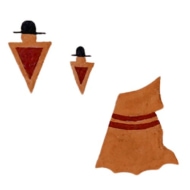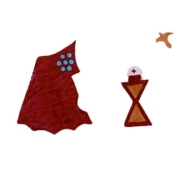REACHING FOR THE STARS: The Story Robe of Blackfeet Community College Celebrating 50 Years of Resilience, Culture, and Education
- The Beginning
Blackfeet Community College (BFCC) was established in 1974 as part of a national Tribal College Movement and was officially chartered by the Blackfeet Tribal Business Council (BTBC) in October 1974. With candidacy status secured, the college became eligible for Tribal College Act (TCCC) funding, allowing operations to begin. BFCC was structured with a Board of Trustees, a President, a Vice President of Academics, and a Director of Student Support. From its earliest days, BFCC focused on offering academic programs in Business, Education, and Human Services—fields chosen to meet community needs. At this time, the college had no formal campus.
2. First Graduates
The first BFCC graduates completed their studies in 1978 through a founding partnership with Flathead Valley Community College (FVCC). These trailblazing alumni were Mary Belcourt, Judy LaPlante, Julene Kennerly, Ladean Rutherford and Leonda Lahr.
3. Early Classrooms and Facilities
Initially, BFCC held classes in borrowed rooms from the Little Flower Parish’s CCD Center. The only permanent structure was the old skating rink, now known as the High Winds Lodge. The college soon acquired the Archambault property, including a quonset hut, a white house, and a faculty trailer. Patty LaPlante, the only Blackfeet faculty member at the time, helped pave the way for prioritizing the hiring of local educators.
4. Accreditation and Validation
Achieving accreditation through the Northwest Commission on Colleges and Universities (NWCCU) was a vital step toward full recognition. Champions of this effort included Carol Juneau, Don Pepion, and Gordon Belcourt. Accreditation allowed BFCC to grant valid degrees and certifications, giving the Blackfeet Nation access to quality higher education. Around this time, the Indian Action Team helped create training opportunities in building trades and workforce development.
5. Student Leadership and Diversity
The student body consisted mostly of women, ranging in age from their 30s to 90s. James Watts became the first BFCC Student Senate President—an important milestone in student advocacy and leadership, as a cornerstone of the governance of the college.
6. Honoring Blackfeet Knowledge and Language
The passing of the Native American Graves Protection and Repatriation Act (NAGPRA) in 1990 coincided with the development of the Blackfeet Studies Program, now referred to as Piikani Studies. This initiative deepened the focus on Blackfeet language, culture, and traditional knowledge systems as a founding principal of the college.
7. Financial Independence, Cultural Identity and our “Universal Community”
In 1990, BFCC’s Board of Trustees was appointed by the BTBC. Initially, all college funds flowed through tribal accounts. Under Gordon Belcourt's leadership, BFCC established an independent financial system, enabling the college to administer its own funds, apply for grants, and relieve the Blackfeet Nation of fiscal responsibility. From 1991 to 2000, the college mission increasingly emphasized Blackfeet language and culture, integrating them into curricula that aligned with programs across the Montana University System (MUS). In 1995, the Montana Legislature appropriated funds to reimburse tribally-controlled community colleges for the education of resident, non-beneficiary students, or students who are not enrolled in a tribe.
8. American Indian College Fund and Infrastructure Growth
The American Indian College Fund (AICF) was founded to support tribal colleges and students. While federal funding for infrastructure was limited, BFCC leveraged AICF support to build the Medicine Spring Library in 1993, named for Carl “Buckles” Schildt. BFCC was recognized as a 1994 Land-Grant Institution, a designation that affirms our critical role in advancing education, research, and community outreach within Indigenous communities. This is the root of BFCC's commitment to support the Blackfeet Nation by continuing to advance the blending of traditional knowledge with modern fields such as agriculture, natural resources, food sovereignty, and public health. This designation strengthened BFCC’s mission to provide culturally grounded education, advance community-driven research, and support tribal sovereignty through sustainable, innovative solutions for our people.
9. Donor Engagement and Program Expansion
BFCC began sharing powerful student success stories with congressional leaders, potential donors to build support for the college’s efforts to aid in students overcoming poverty and fostering post-secondary educational opportunities. Federal funds were targeted toward specific programs, while alternative funding supported other areas of growth.
10. Campus Expansion and Land Reclamation
The college acquired multiple properties, including land east of the High Winds Lodge, including Ashes Chief Lodge and Stucks Behind Lodge. The college then acquired 680 acres from Bill Aubrey, which marked a major victory in the expansion of the college’s physical infrastructure—reclaiming land to expand educational access for the Blackfeet Nation. Much of this land acquired, consisting of the college’s developing East Campus, had once belonged to the Nevins and Aubrey families.
11. Accreditation and Academic Growth
By 2000, over 2,200 students had attended BFCC since its inception. All faculty division chairs had earned graduate-level credentials. The college also launched the LEAP (Leadership Education and Advancement Program), with 17 students earning doctoral degrees and 16 completed master’s programs, increasing the number of local people with advanced degrees, a critical component of the college’s gradual development and growth into the future.
12. Accreditation and Academic Growth
By 2000, over 2,200 students had attended BFCC since its inception. All faculty division chairs had earned graduate-level credentials. The college also launched the LEAP (Leadership Education and Advancement Program), with 17 students earning doctoral degrees and 16 completed master’s programs, increasing the number of local people with advanced degrees, a critical component of the college’s gradual development and growth into the future.
13. Campus Infrastructure Milestones
The Beaver Painted Lodge was completed in 2000, led by Carol Tatsey-Murray and Terry Tatsey. In 2010, construction began on the South Wind Lodge—Montana’s first LEED Platinum-certified building on tribal lands—thanks to the leadership of Terry Tatsey and Ron Blomquist.
14. Nursing and Honoring Legacy
BFCC launched its first Bachelor of Science in Nursing (BSN) program and completed the Yellow Bird Woman Lodge, named in honor of Elouise Pepion-Cobell or Yellow Bird Woman, a courageous Blackfeet leader, banker, and activist who fought for Native rights and financial justice. She is best known for leading the landmark class-action lawsuit Cobell v. Salazar, which resulted in a $3.4 billion settlement for mismanaged Native trust funds—the largest in U.S. history. Her legacy continues to inspire Indigenous advocacy and self-determination. a champion of justice and education.
15. Resilience Tested by COVID-19
During the COVID-19 pandemic, BFCC swiftly transitioned to remote learning and operations, preserving educational continuity, and despite devastating losses in the Blackfeet community, the pandemic presented the college with a unique opportunity to grow its capacity to reach more students and expand access to Blackfeet ways of knowing, culture and highlight the importance revitalizing the language. This resilience was further inspired by the creation of a $5 million endowment intended to support the college’s growth into the future.
16. Looking Ahead: Advancing Culture in Higher Education
BFCC continues to grow and adapt, firmly rooted in Blackfeet cultural values and driven by a commitment to academic excellence and workforce development. As we look beyond our 50th year, the college remains dedicated to strengthening programs and services through deeper community engagement. The college recognizes that student success is closely tied to wellness and cultural identity, and we support students in finding their source of strength to thrive in higher education. BFCC is expanding opportunities across the spectrum—from community education to two-year and four-year degrees, and beyond.
The Sun
The Moon
About the Artist
My name is John Isaiah Pepion, and I am a Plains Indian graphic artist from the Piikani Band of the Blackfoot Confederacy. I'm based out of the Blackfeet reservation in north-central Montana, where the Rocky Mountains meet the plains. I am best known for my ledger art, which is an art tradition that developed in Plains tribes: as the buffalo hide we traditionally used for painting became scarce, Plains people were forced to adapt by making artwork on ledger paper from accounting books. I come from a family of artists, and ledger art has been in my family for hundreds of years.
For more information about John Isaiah Pepion please visit: https://johnisaiahpepion.com/pages/biography


